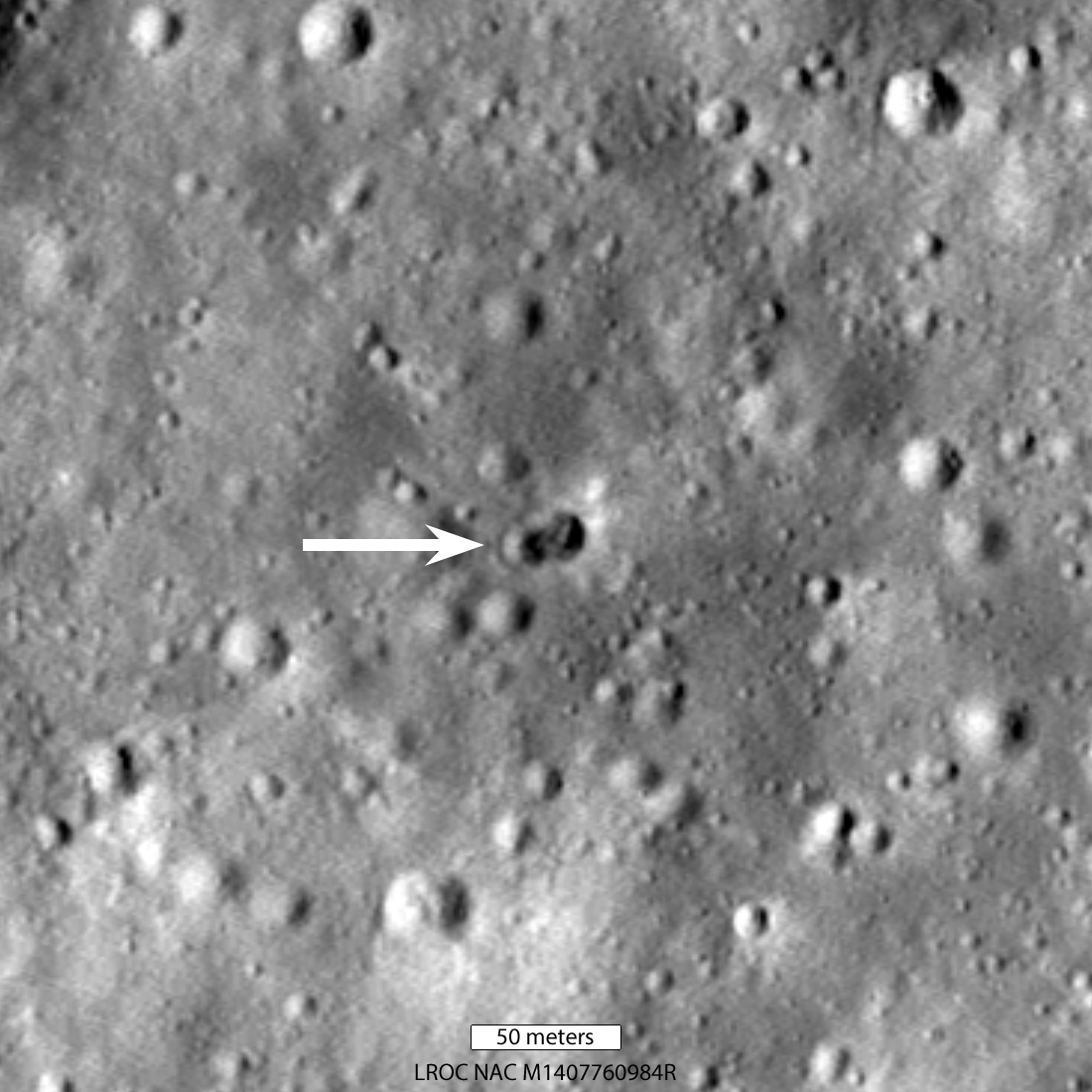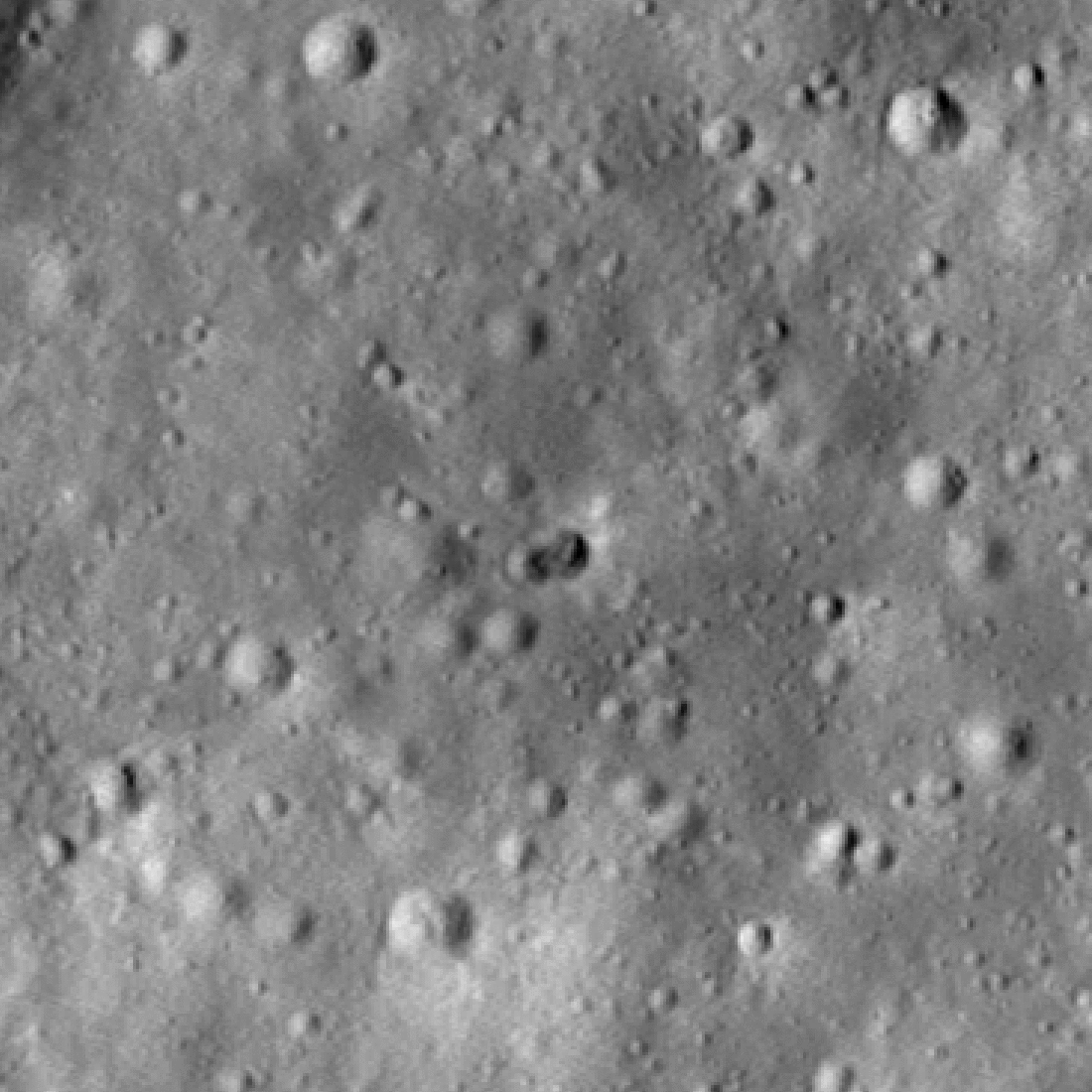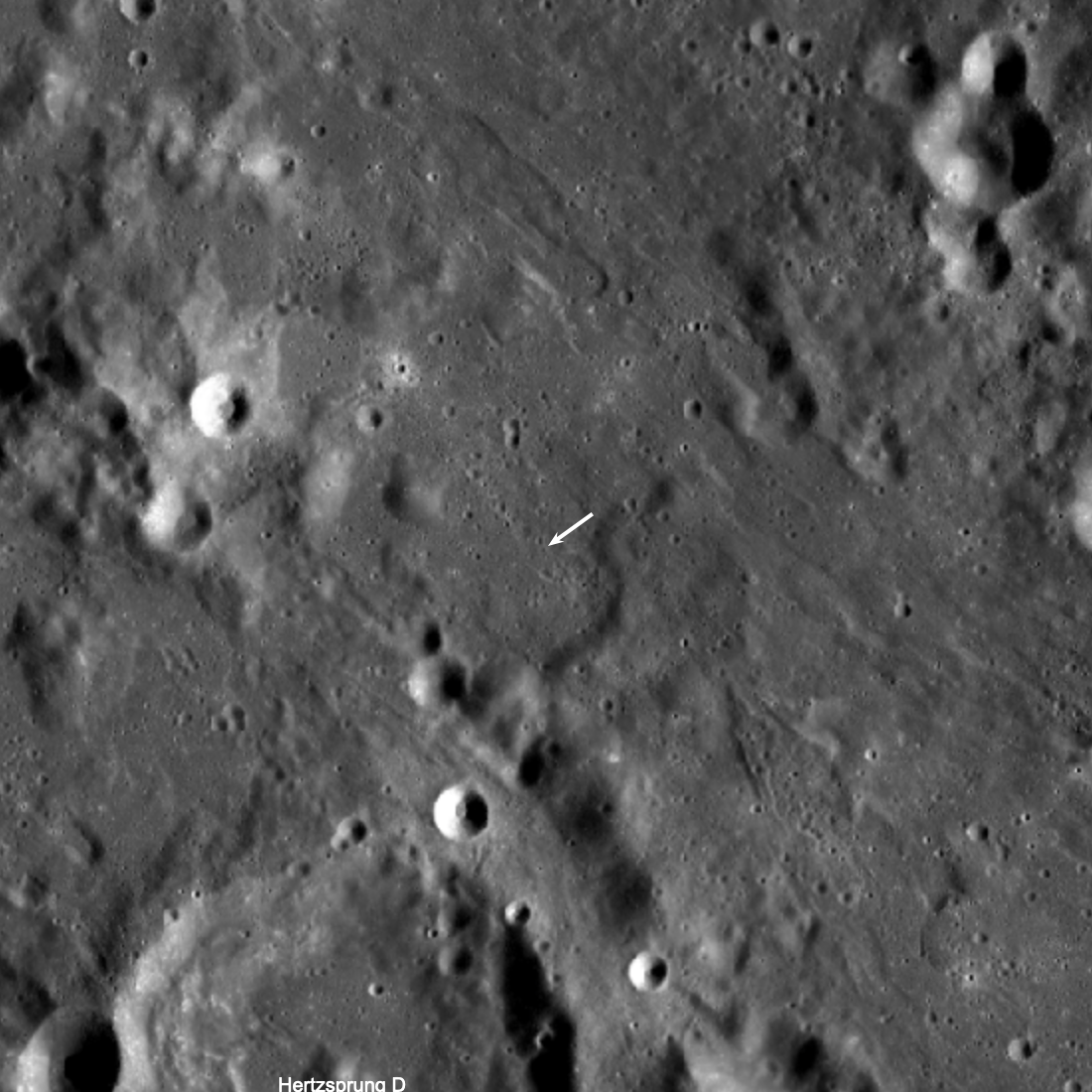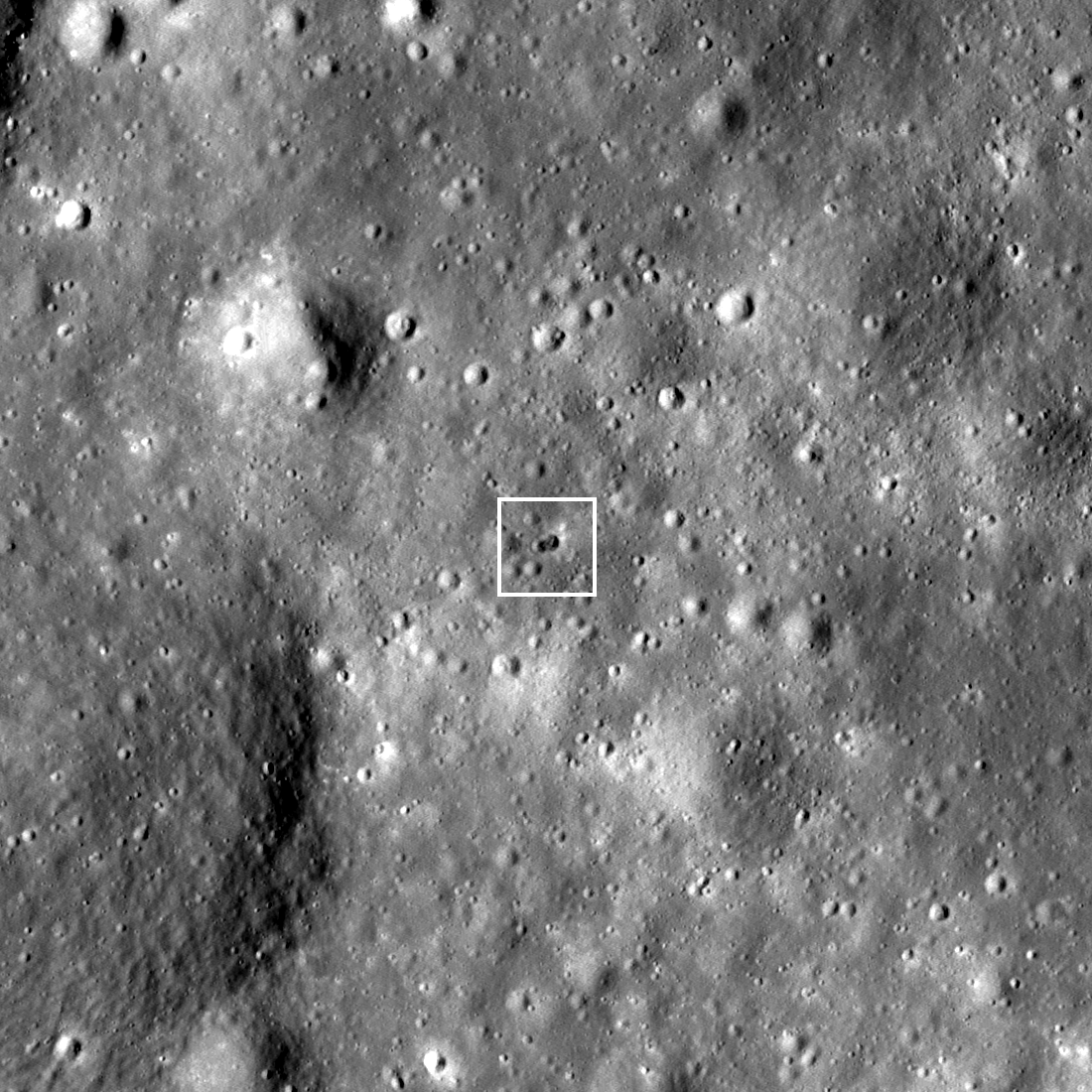
Astronomers discovered a rocket body heading towards a lunar collision late last year. Through a series of observations, they predicted the time of impact and its location (to within 100 kilometers). The identity of the rocket body remains unclear. Surprisingly the crater is actually two craters, an eastern crater (18 m diameter) superimposed on a western crater (16 m diameter).


The double crater shape was unexpected and may indicate that the rocket body had large masses at each end. Typically a spent rocket has mass concentrated at the motor end; the rest of the rocket stage mainly consists of an empty fuel tank. Since the origin of the rocket body remains uncertain, the double nature of the crater may help to indicate its identity.
No other rocket body impacts on the Moon created double craters. The four Apollo SIV-B craters were somewhat irregular in outline (Apollos 13, 14, 15, 17) and were substantially larger (>35 meters in diameter) than each of the double craters. The maximum width (29 meters) of the double crater of the mystery rocket body was near that of the S-IVBs.


Related Featured Images
Rocket impacts recorded by the Apollo seismic network
Found! Apollo 16 S-IVB Impact Crater
Published by Mark Robinson on 23 June 2022